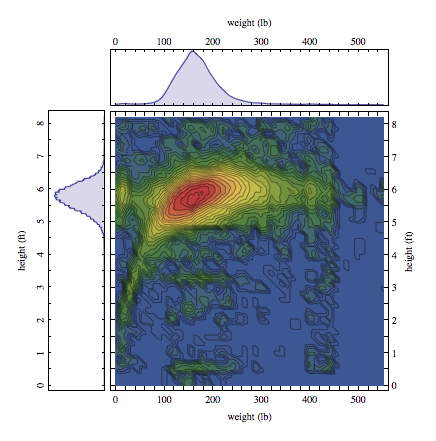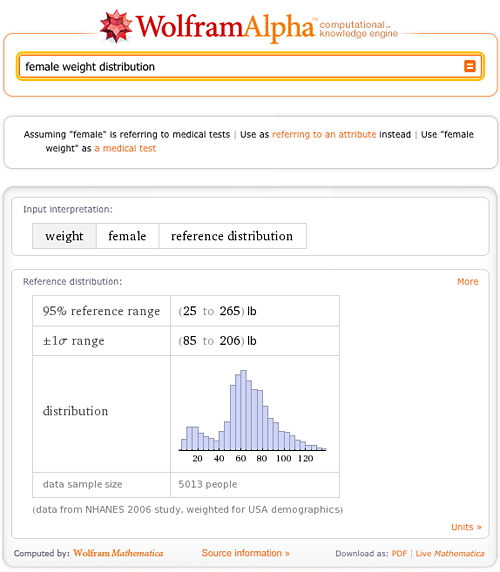
 10
10
We humans often notice the passage of time by observing our watches; the movement of the Sun, Moon, and stars across the sky; or by the records left by our ancestors in diaries or other historical records—but these are just fleeting moments in the eyes of geological time. We are used to thinking about recorded history. But recorded history is just a blink when compared to the length of time called pre-history. Recorded history only goes back a few thousand years. The Earth is far older.
It’s hard for humans to grasp just how long the Earth has been here. Using a variety of methods, geologists have been able to put together many pieces of a very complicated puzzle. After all, how do you assemble a puzzle when you’re not sure what the finished picture should look like? From studying processes that are happening today, such as geological composition, rates of deposition, weathering, climatology, biology, and Earth’s magnetic field, geologists can extend these processes back to ancient times and learn what the Earth was like billions of years ago. When combined with data points such as those found in the fossil record, these extrapolations can be constrained, and the picture starts to emerge from the puzzle. More »
 3
3
Halloween week is full of spooky tricks and tasty treats. And between the office parties and the loads of edible loot reaped by the little ghosts and goblins, monitoring consumption of all those treats can be both tricky and scary!
But have no fear, we built this handy Wolfram|Alpha Widget that lets you check out nutrition information for common Halloween candies. We’ve pre-selected treats such as Snickers, Reese’s Peanut Butter Cups, Twizzlers, Butterfingers, and others from Wolfram|Alpha’s large nutrition database.
Simply select your treat from the drop-down menu and enter the number of servings you plan to enjoy. Wolfram|Alpha will then compute a custom nutrition label providing details on calories, fat, cholesterol, carbohydrates, protein, and nutrients.
Keep this widget handy throughout the week by embedding it on your blog or website. To explore more nutrition-related widgets, visit the Widget Gallery or build your own widget to explore your favorite candies (or food selections more rich in nutrients).
What’s your favorite Halloween treat?
 3
3
Wolfram|Alpha has many trillions of pieces of data, many of which are facts about people, places, and things. All of this knowledge is built upon a computational engine that allows us to mash up topic areas and do impressive, if not outrageous, computations. In honor of it being Friday, we’ll share a few fun facts to get your mind curious about what else is waiting to be discovered within Wolfram|Alpha.
Fact: Your Halloween Jack-o’-lantern has 40 chromosomes.
Fact: There are 4.3 x 10^6 calories in one short ton of Snickers.
Fact: Lassoing the Moon from Earth will require about 239,200 miles of rope on average!
Fact: 36 degrees was the high temperature in New York City on the day Justin Bieber was born.
Fact: On April 1, 1976, just 47 years after Louis Marx popularized the yo-yo, Apple Computer was created—no joke!
These are just few of the fun facts highlighting data areas such as nutrition, species, science, weather, history, and events. What fun facts have you discovered in Wolfram|Alpha?
 4
4
When we talk on this blog about “making knowledge computable”, the knowledge in question is often mathematical or statistical in nature. But that’s not the only knowledge Wolfram|Alpha can compute. We’ve always had a solid backbone of dictionary-style information about words, but we’ve been steadily adding new features to that traditional output. Some of it should be quite useful, some of it is just for fun, and much of it takes advantage of Wolfram|Alpha’s ability to mash up algorithms and data from a wide variety of knowledge domains.
To celebrate National Dictionary Day (October 16)—which honors Noah Webster, often regarded as “the father of the modern dictionary”—you might like to take advantage of this classic word widget, which provides quick access to some of the more traditional areas of Wolfram|Alpha’s lexicographical data: definitions, pronunciations, synonyms, and more for most English words.
Or grab the next widget if you want to play around with a few of the “fun” features we’ve added, including the ability to compute anagrams and convert words to telephone keypad digits. More »
 4
4
Have you ever wanted a simple way to explain Wolfram|Alpha to your friends? Now you can by sharing our new video, “Wolfram|Alpha in a Nutshell”.
Sure, it’s pretty cool that Wolfram|Alpha is the world’s first computational knowledge engine, containing trillions of pieces of data in more than 1,000 domains. (Wow, that’s a mouthful!) But what’s really important to you is how it can provide you with exact answers for questions in topic areas ranging from astronomy and food and nutrition to math, socioeconomics, and so on.
If you’d like to explore more about the world of Wolfram|Alpha, check out our new About page, which contains community resources, products, downloads, and more.
Go ahead, share “Wolfram|Alpha in a Nutshell” with your friends!
 7
7
Have you ever wanted to contribute to Wolfram|Alpha? Do you have an area of expertise you would like to share with the world? By becoming a volunteer data curator for Wolfram|Alpha, you can help us expand our data and be a part of our initiative to make the world’s knowledge computable.
We’ve now made it easier than ever to contribute with the opening of Volunteer Central, the new landing pad for Wolfram|Alpha volunteers.

Volunteer Central is a place for contributors to get updates, check out new projects, and track their progress. Projects are categorized into challenge areas, which are searchable in the dashboard. After applying for an account on the network and creating a login, you can easily find projects to work on, upload them, and see your completed and in-progress projects all in one place.

Uploading a new project earns you “data points”, which add up in your dashboard. Different levels of data points will earn you badges that you can display proudly on your Facebook page and Twitter, as well as other websites.

We currently have projects in challenge areas ranging from currency data to video game data, and we will be adding new projects on a consistent basis. If you want to contribute, but don’t see a challenge area that interests you, you can suggest it by emailing us.
Volunteer Central is a fun and easy way to contribute to Wolfram|Alpha and connect with other Wolfram|Alpha enthusiasts. Use your passion for data for good and sign up to be a volunteer today!
 5
5
From gathering around the family radio to listen to “The War of the Worlds” broadcast in 1938 to watching the local weather forecast on your 52-inch plasma TV, wireless transmission has been a primary source of information, communication, and entertainment for the past century. Today, thousands of radio and television stations are broadcasting around the world. Beyond your favorite songs, news broadcasts, and shows, how much do you know about the broadcast stations you listen to and watch? The United States Federal Communications Commission (FCC) has a large amount of information on the radio and television stations broadcasting in the U.S. as well as a number of stations in other countries in the Western Hemisphere, and recently this data was added to Wolfram|Alpha.
Try out the call sign for your favorite radio station. You might be interested to know who holds the license for that station or find out that it’s being broadcast from that antenna you drive by on your way to work. The local map not only shows you the location of the antenna, but is also zoomed in to show the approximate listening area. How tall is that antenna? Wolfram|Alpha has the answer, as well as a lot of other technical details about the station antenna.

On a road trip and stumble upon an interesting AM station broadcasting on 1010 kilohertz? You don’t need to know the call sign to get the information. Try “1010 am radio”, and Wolfram|Alpha will give you the information for the station broadcasting on that frequency closest to you. If it’s a long road trip, you might find a couple stations broadcasting on the same frequency along the way. All the stations broadcasting on 1010 kilohertz are shown, along with their locations and distances from you. More »
 85
85
It’s here! You can now download the all new Wolfram|Alpha App for Android on the T-Mobile Channel or Android Market for $1.99 (US).
Get answers from Wolfram|Alpha’s massive knowledge base in an instant by downloading the app for the all new T-Mobile® G2™ with Google™. Combining the power of the T-Mobile® G2™ with Google™ on the blazing fast 4G speeds of T-Mobile’s network with the power of Wolfram|Alpha creates an extraordinary experience for knowledge on the go.
The app puts Wolfram|Alpha’s growing repository of curated data, including over ten trillion data elements, and its library of tens of thousands of sophisticated computational models in the palm of your hand.
Android’s native voice-input capability lets you speak your queries to Wolfram|Alpha and get your answers hands-free.
The app’s specialized keyboards make mathematical expressions look and feel natural, enhancing usability and understanding. The keyboard comes in handy for everything from solving quadratic equations while on the bus to balancing chemical equations in the lab. More »
 5
5
Based on the vast number of queries we have been receiving from users all around the world, we thought it would be very interesting to draw some inferences from it. We started with “Human Body Measurements”, one of the many topic areas in Wolfram|Alpha. We thought it would be a safe assumption to make that in more cases than not, when users query for data based on weight or height values, they are most likely looking for data about themselves (narcissism, thy name is Homo sapiens). Based on this assumption, we plotted all of the height and weight inputs and ended up with the following distribution:

We can see from this that the average Wolfram|Alpha user is an individual who weighs about 154 pounds and is between 5′ 9″ and 5′ 11″ tall. This translates to a BMI of between 21.5–22.7 for men or women. From these results, we see that the average user falls within normal distribution.
Let us see how this hypothetical Wolfram|Alpha user compares with the average American male or female:
Similarly, we can compare user heights with the height distribution of the general population in America: More »





